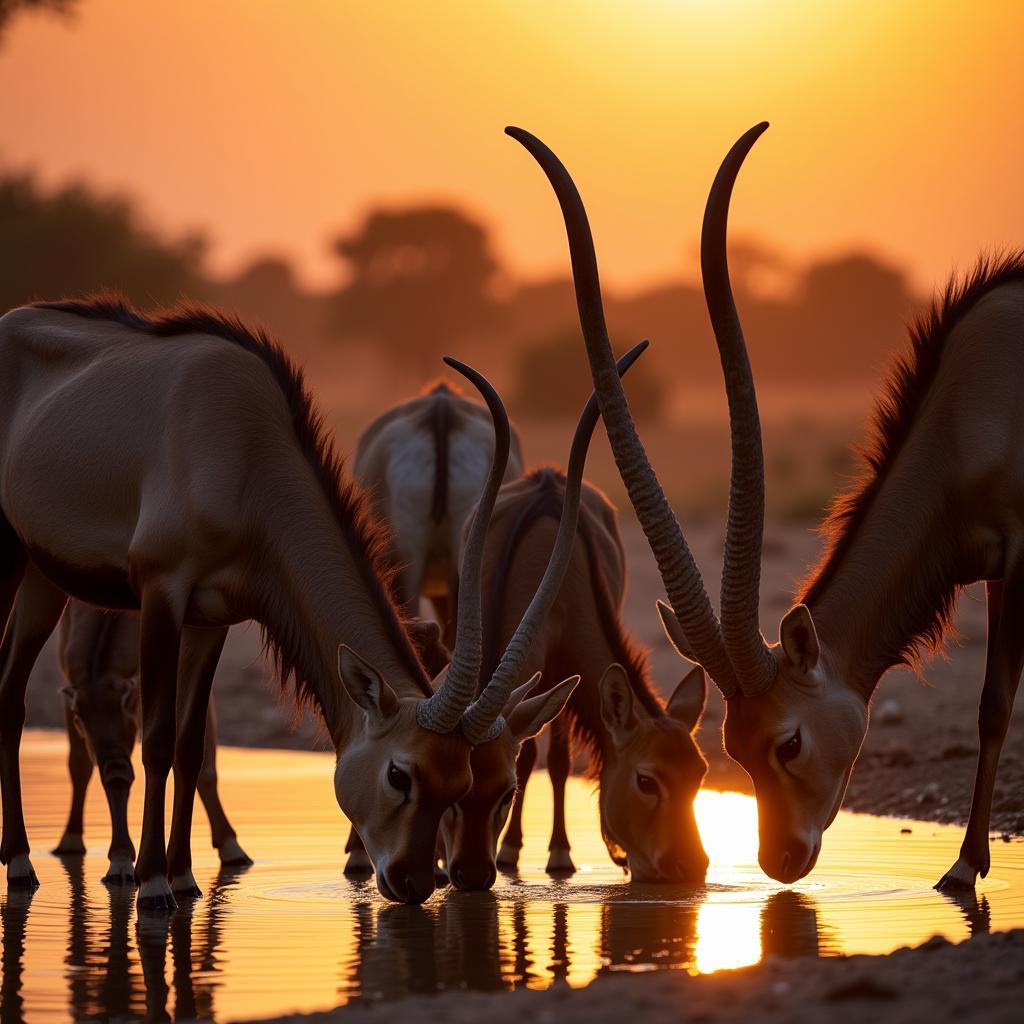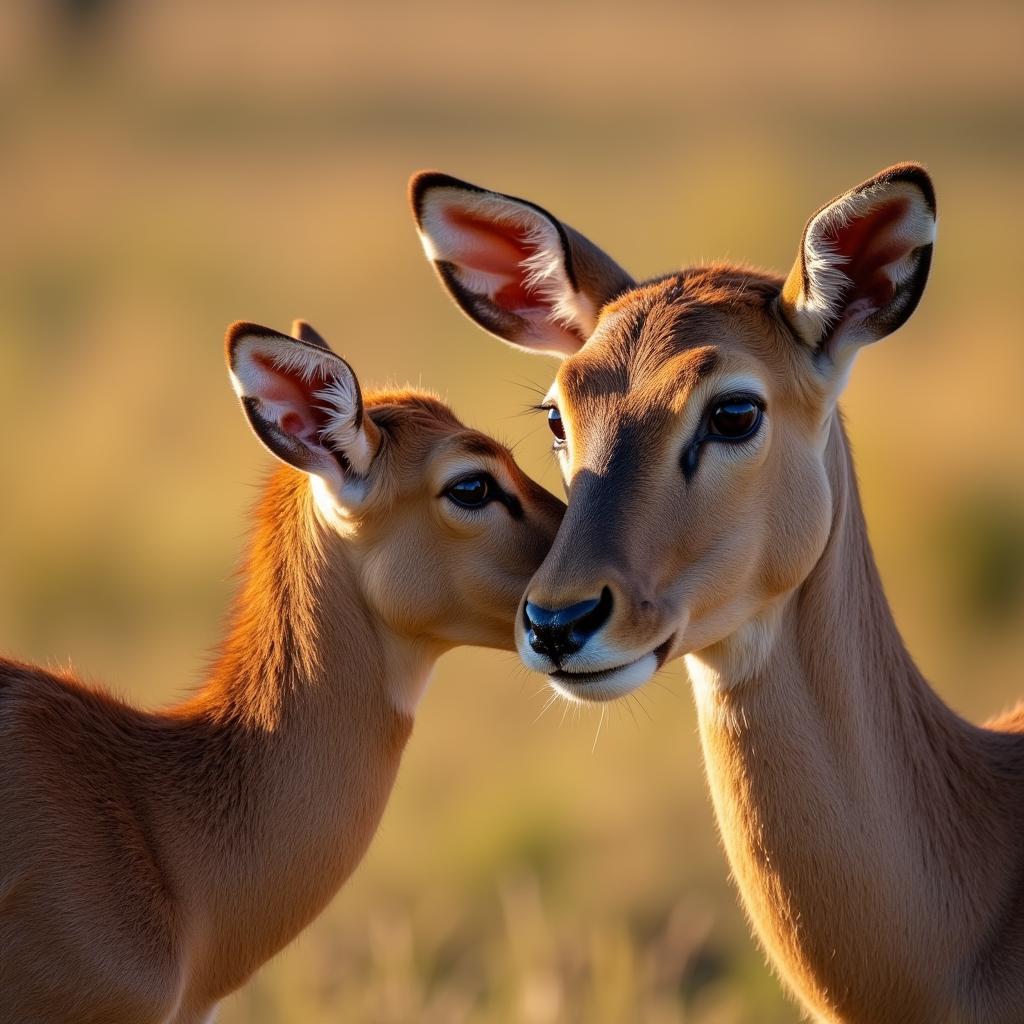A Comprehensive List of African Antelopes: Unveiling the Diversity
Africa, a land teeming with life, boasts an astounding array of wildlife. Among its most graceful inhabitants are the antelopes, creatures of unmatched elegance and diversity. From the diminutive dik-dik to the towering eland, the african antelope species never fail to captivate with their beauty and ecological importance. This comprehensive guide delves into the fascinating world of African antelopes, exploring their diversity, habitats, and the challenges they face.
Navigating the Antelope Family Tree: A Classification Overview
The term “antelope” itself doesn’t represent a single taxonomic group, but rather a loose collection of hoofed ruminant mammals belonging to the family Bovidae. Within this diverse family, antelopes make up a significant portion, showcasing an incredible variety of shapes, sizes, and adaptations.
To understand their diversity, it’s helpful to look at their broader classification:
- Subfamily Bovinae: This subfamily includes some of the larger antelope species, such as the African buffalo and the eland, the largest of all antelopes.
- Subfamily Cephalophinae: Known as duikers, these small to medium-sized antelopes are generally shy and solitary, preferring dense vegetation for cover.
- Subfamily Hippotraginae: This group encompasses the grazing antelopes, characterized by their impressive horns and adaptations for living in open habitats. Notable examples include the majestic sable antelope and the oryx.
- Subfamily Reduncinae: The reedbuck and kob are members of this subfamily, often found in wetland habitats and known for their distinctive calls.
 African Antelope Drinking at Waterhole
African Antelope Drinking at Waterhole
From Grasslands to Woodlands: Exploring Antelope Habitats
African antelopes have colonized a diverse range of habitats across the continent, from the savannas and grasslands to woodlands and even mountainous regions. Their ability to thrive in such varied environments is a testament to their adaptability.
- Savanna Specialists: Many antelope species, like the wildebeest and zebra, have evolved to take advantage of the vast grasslands of the African savanna. Their grazing habits play a crucial role in maintaining the delicate balance of these ecosystems.
- Woodland Dwellers: Duikers and bushbuck are well-suited for life in dense forests and woodlands. Their smaller size and secretive nature allow them to navigate the undergrowth with ease.
- Mountain Climbers: Some antelope species, like the klipspringer, have adapted to life in rocky, mountainous terrain. Their remarkable agility and specialized hooves allow them to scale steep slopes with surprising ease.
“The diversity of antelope species is directly linked to the variety of habitats found across Africa,” notes Dr. Amani Jabari, a renowned wildlife biologist specializing in African ungulates. “Each species has carved out a unique niche for itself, contributing to the intricate tapestry of life on the continent.”
Facing the Threats: Conservation Concerns for African Antelopes
Despite their resilience and adaptability, many African antelope species face growing threats to their survival. Habitat loss due to human encroachment, poaching for their meat and horns, and the impacts of climate change pose significant challenges to their populations.
- Habitat Loss and Fragmentation: As human populations grow and expand into previously wild areas, antelope habitats are becoming increasingly fragmented and degraded. This loss of habitat not only reduces their available resources but also isolates populations, making them more vulnerable to other threats.
- Poaching: The illegal wildlife trade continues to pose a grave threat to many antelope species. Their horns are highly prized in some cultures, leading to relentless poaching that decimates populations and disrupts social structures.
- Climate Change: The increasing frequency and intensity of droughts and other extreme weather events, driven by climate change, can have devastating impacts on antelope populations, particularly those already facing habitat loss and other pressures.
Protecting African antelopes requires a multi-faceted approach, encompassing habitat conservation, anti-poaching efforts, and community-based conservation initiatives that engage local communities in protecting these magnificent creatures. By addressing these challenges, we can help ensure the survival of these iconic animals for generations to come.
 African Antelope Mother and Calf
African Antelope Mother and Calf
FAQs: Unraveling the Mysteries of African Antelopes
1. What is the largest antelope species in Africa?
The eland, standing up to 6 feet tall at the shoulder and weighing up to 2,000 pounds, holds the title of the largest antelope species in Africa.
2. Which African antelope is known for its incredible jumping ability?
The springbok is renowned for its remarkable jumping prowess. It can leap up to 13 feet in the air, a feat that helps it evade predators.
3. Do all African antelope species have horns?
No, not all African antelope species possess horns. For example, the duiker, a small and shy antelope, typically has very small horns, while the females of some duiker species lack horns altogether.
4. What is the conservation status of African antelopes?
The conservation status of African antelopes varies widely depending on the species. Some, like the eland and impala, are relatively widespread and abundant. However, others, such as the addax and the hirola, are critically endangered and face an imminent threat of extinction.
5. How can I contribute to African antelope conservation?
Supporting reputable conservation organizations working in Africa, raising awareness about the plight of endangered species, and advocating for sustainable land-use practices are just a few ways you can make a difference in the conservation of these remarkable animals.
Exploring Further: Delve Deeper into the World of African Antelopes
To further expand your knowledge of these fascinating creatures, we invite you to explore our other articles:
- African deer with spiral horns
- 10 african animals
- African deer with straight horns
- African cheetah wikipedia
From the open savannas to the dense woodlands, african antelopes list represents a captivating tapestry of evolutionary adaptation and ecological significance. Understanding their diversity, habitats, and the challenges they face is crucial for appreciating their vital role in the intricate web of life on the African continent. By supporting conservation efforts and promoting responsible wildlife tourism, we can help ensure that these majestic creatures continue to grace the African landscape for generations to come.
Need Help?
Contact us for any assistance:
- Phone Number: +255768904061
- Email: kaka.mag@gmail.com
- Address: Mbarali DC Mawindi, Kangaga, Tanzania
Our customer service team is available 24/7 to assist you.


